Access PDF here:
https://drive.google.com/open?id=1U-2tFq1QUBQT5WNul_g_lWTt2OrVNJxh
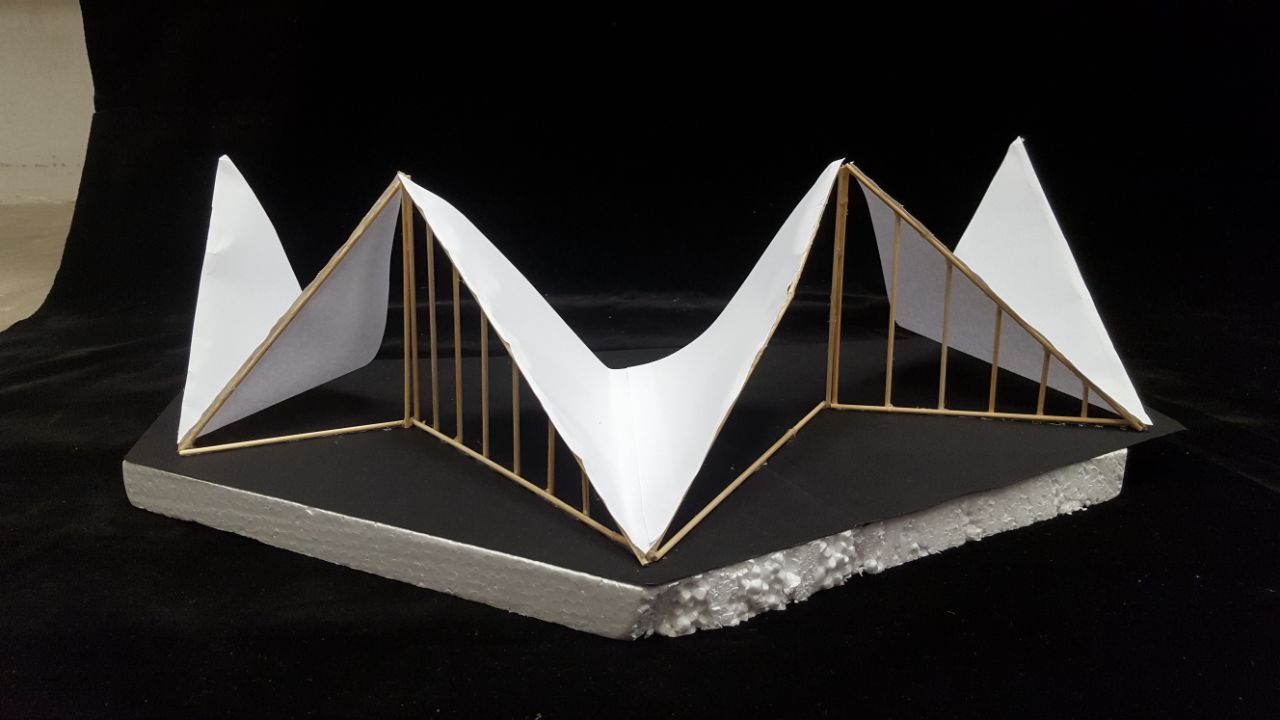
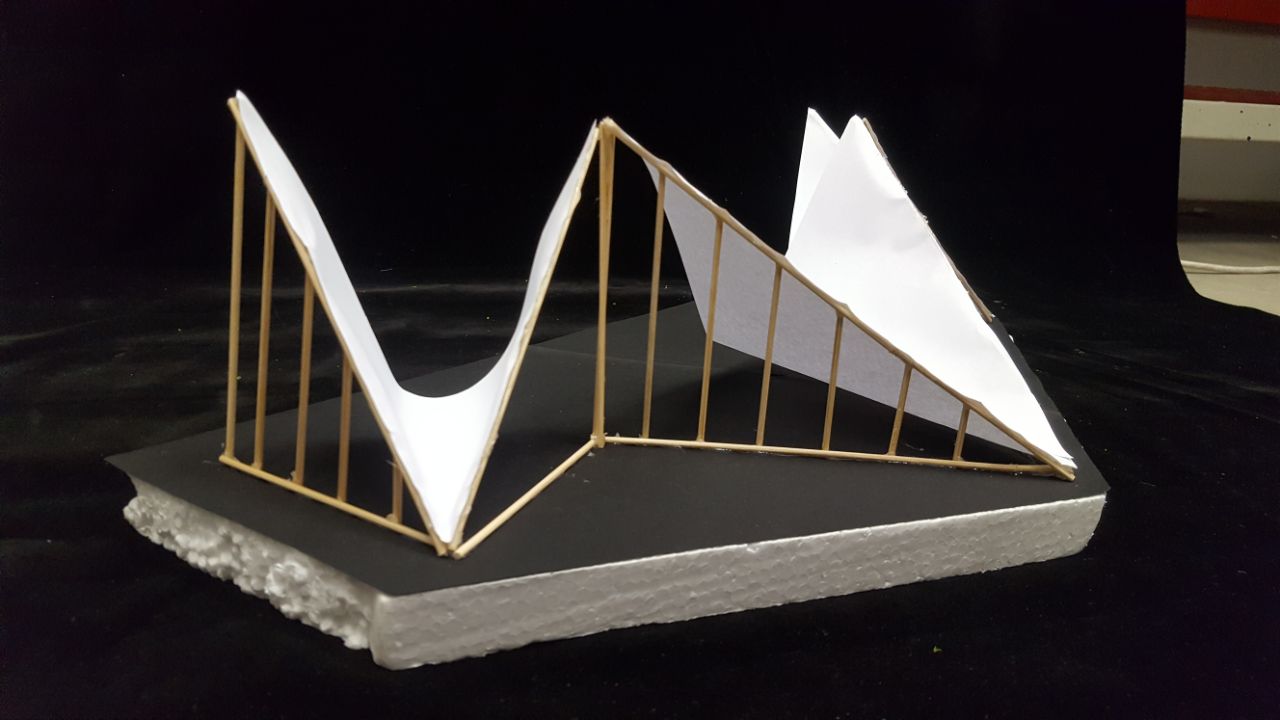

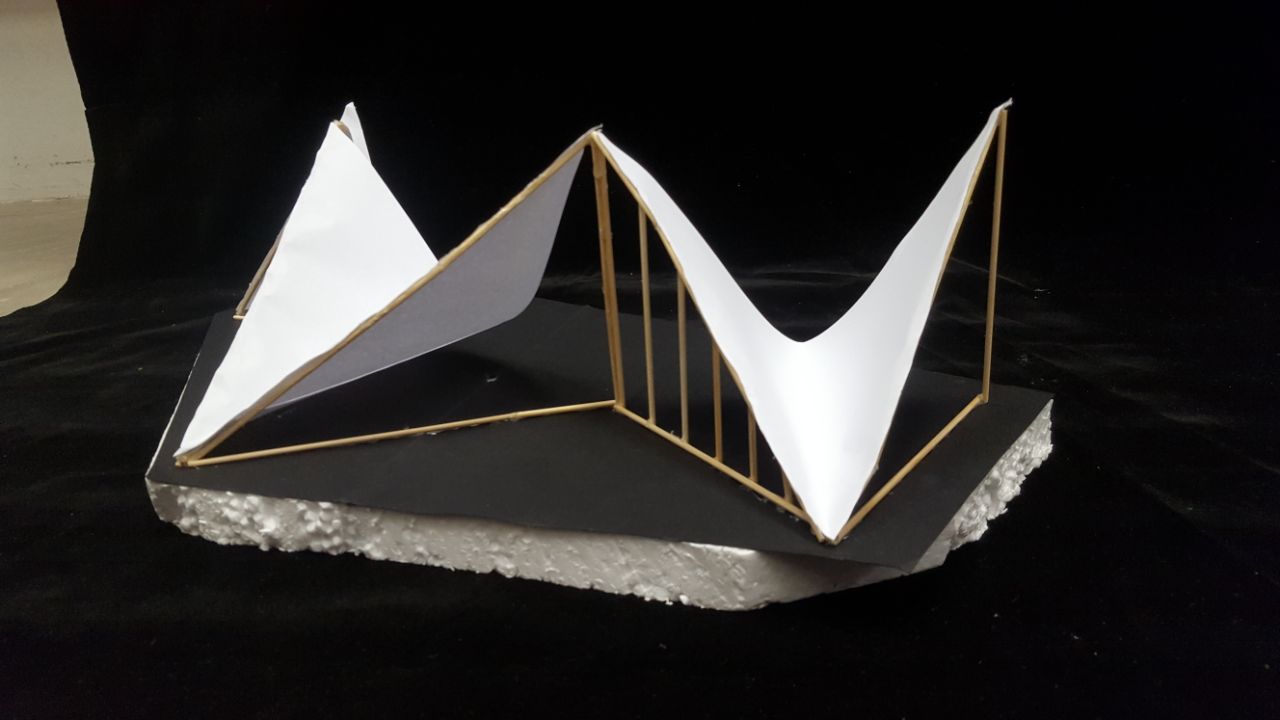
This installation, titled Consent, is in response to the notion that consent is unclear which have contributed to a host of misinterpretations and unconsenting sex. We believe that consent shouldn’t be overlooked during sex and should always be clear and assertive. Our installation seeks to act as a reminder to all adults to give and seek consent before any kind of sex, be it oral or penetration. The participant sits through a 3-course meal in a fine dining setting. The first 2 courses allude to foreplay before sex; the first dish being a strawberry glazed with honey and dipped in chocolate, the second being an undressed peach. The participant glazes the strawberry with honey and dipped it in chocolate. This act gives the participant a strong erotic visual and experience, setting the mood of the installation. Next, the participant is cued to move on to the next course, a peach in a flirty and frilly thong, by the waiter, through the lighting of tea lights. The participant is guided along to caress the peach and to undress it. He or she then proceeds to slice a piece of the fruit for his or her consumption. The final main course, which alludes to the vagina, is a peeled grapefruit and is concealed by the food cover. The participant will follow an auditory guide through the first 2 courses. At the main course, the participant, who has already been conditioned to the flow of the 3-course meal, would attempt to pry open the food cover without prompt. Upon opening, all ambient visuals and sounds will cease and the screen will project this sentence, ” Sex is not a natural conclusion”. The dissonance in the intimate audio guide in comparison to the ambient settings illustrates the fabricated reality of the person engaging in foreplay and actual reality. This highlights the fact that the perception that sex seemed like the only conclusion for the night, given the flow of events before, is a crass assumption of the individual. Consent should be explicitly sought after and given.
The accompanying audio guide can be accessed here:
Welcome, thank you for dining with us tonight. To achieve the full experience out of this dining process, please listen to this audio track.Reach over to the honey on your right. Drizzle it over the strawberry as your eyes trail its path. Pick her up and dip it gently into the chocolate ganache. Go on, you can double dip, you can do anything you want. Now, bring it up to your lips and let your tongue glaze over her. What does she taste like? Close your eyes and take a bite. Sweet like a first kiss, isn’t she?With your fingers, trace the contours of her body. Oh, don’t be shy. She’s all here for you. Tell me, Who does she remind you of? Now, gently remove those frillies. You don’t want to get that messed up, do you? Pick your tools up and insert the fork into her flesh. Nestle your knife in between her curves and go back and forth. Back and forth. Slice through her tender skin. Have you gotten a piece of her yet? Go on, have a taste of her succulent flesh.Now dear, remove your earbuds. It’s time for the main course.
First round of play test was quite chaotic as our photocell was overly sensitive to the lighting conditions. Moreover, the clear plastic food cover has not yet been covered, thus it affected the lighting greatly. However, later at the end of class, we consulted Lei for the technical faults and we managed to resolve it. It might have been the connection of the wires as we did not make changes to the code and the interaction worked as it should have, later.
We wanted to test out the interaction on the projector but could not as the projector failed to recognise the input. Thus, we consulted the technicians at the equipment lab the next day and managed to resolve it by loaning another HDMI cable.
Connection of wires
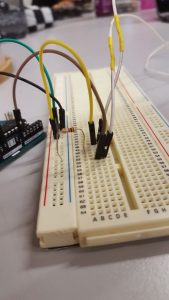
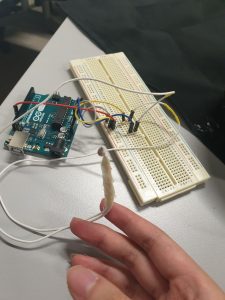
Spray painting and sanding down food cover
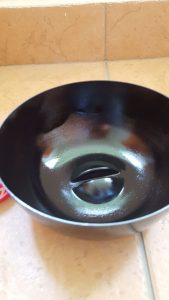
Tried to cut strawberries to imitate lips but failed.
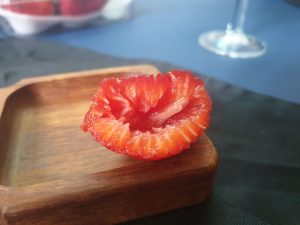
Lingerie for the peach
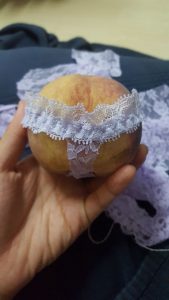
Wrap the wires and photocell with tape and cling wrap. Drill a hole in the middle of the plate and thread it through the hole and grapefruit.

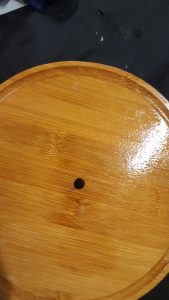
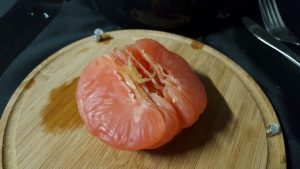
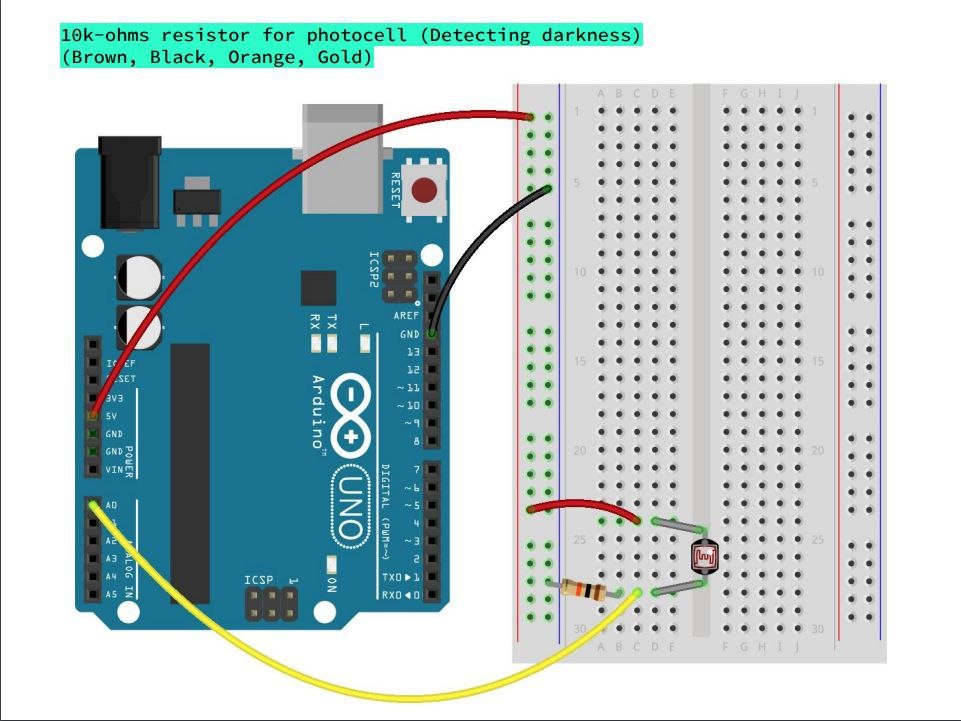
2. Arduino Code
Photocell Input Code
3. Processing Code
4. Connect the laptop to the projector and screen the video
5. Lay the table out accordingly
6. Switch off the lights
7. Play the audio guide (above) for your participant through earbuds or earpiece
8. Guide the participant through the installation by lighting up the tea lights
Click on link to access CPJ: https://drive.google.com/file/d/1hf7x0fiSdJOkT71dXTuhHEPW2vou-xGh/view?usp=sharing
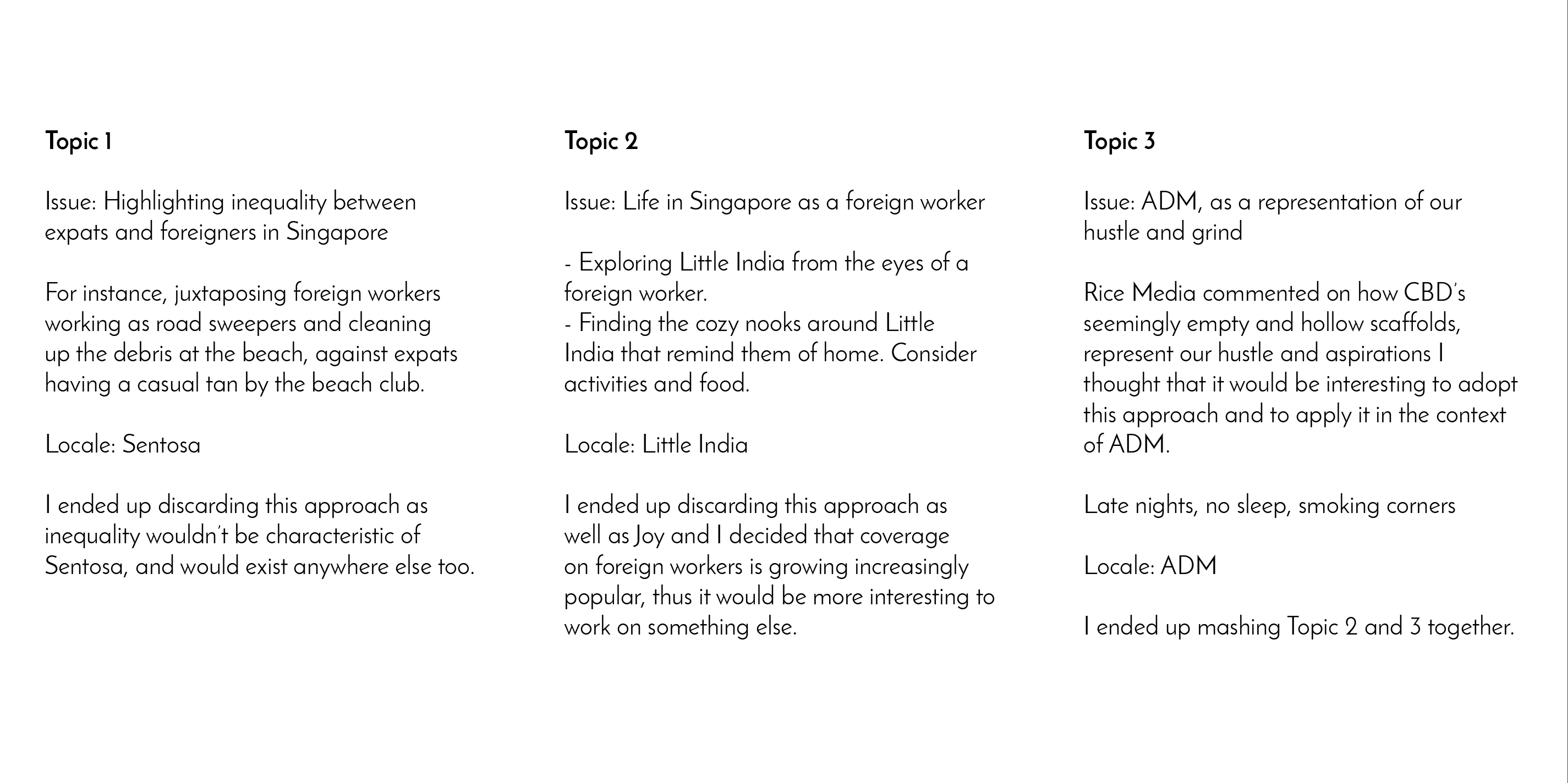
Chinese New Year in the CBD: An Oasis of Calm
Every Chinese New Year, the CBD empties out. It grows quiet, reminding us that without people, it is nothing more than concrete and steel. Which made us wonder: in the same way that these buildings serve no purpose without us, who are we without them? Without our obsessions with the rat race? Without our dreams of material things and the good life?-Music credit: Jean Ferry – A Song to Sleep To (Instrumental)(We recommend that you watch this with the sound on)
Posted by Rice Media on Wednesday, 13 February 2019
Final Approach: Look at CBD from the eyes of foreigners. To explore and identify nooks that represent a home away from their native land. And to empathise with Singapore being their place of grind and hustle.
Locale: CBD
I decided to approach the topic through profiles of foreigners in Singapore. On my first day of the site visit, I just took general pictures of the sights and sounds of CBD as seen on the presentation slides. I also gathered empirical data from friends and family through an online survey on the process of settling down in Singapore.
On the subsequent days of research, I interviewed 5 of my friends/relatives who were foreigners and were either works or frequent CBD area. I recorded the interview for notetaking, and transcripted it later. I took pictures of their work desks/countertops and visited places that reminded them of home in CBD area.
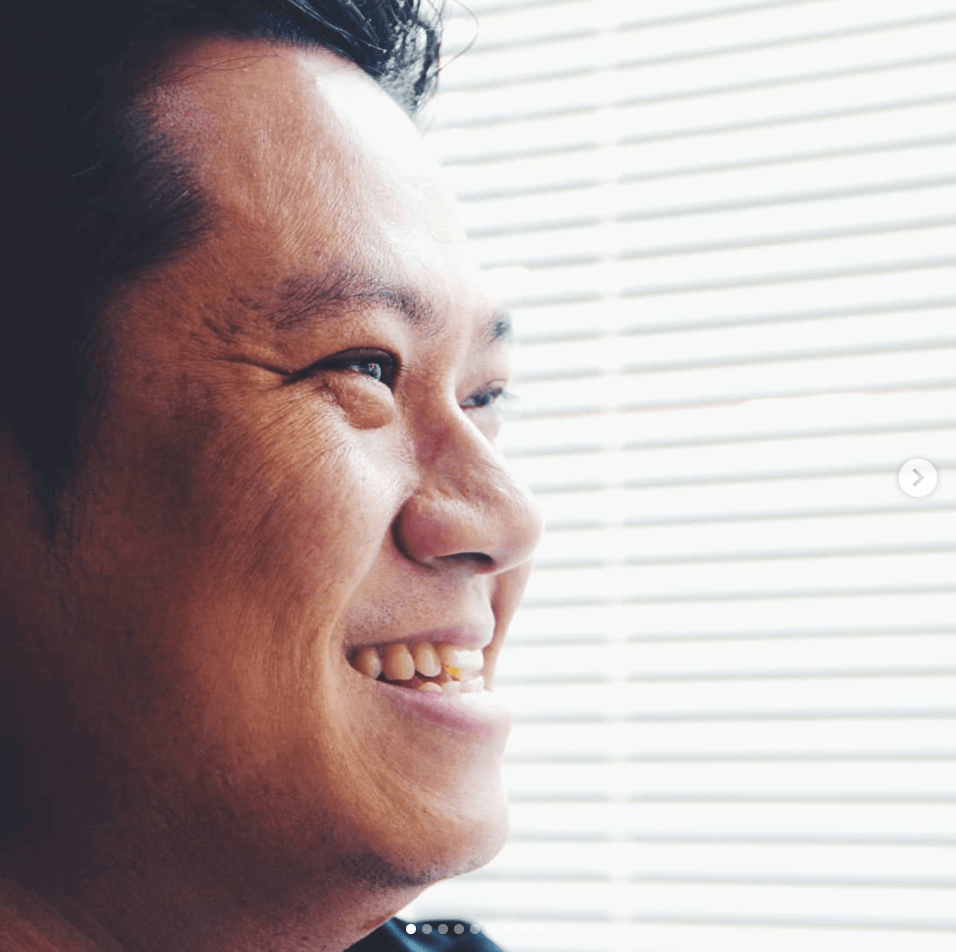
“I came over to Singapore as my wife found a job here and for its job opportunities. It didn’t take me long to settle down because I was already living alone in Philippines before moving over. That being said, having family around is always much better. Before coming over, I was mainly taking up freelance gigs in Philippines. However, working Singapore definitely built the foundations of my career and is where I intend to stay and build a future with my wife.
Last year, my dad fell sick and that was when I missed home more frequently. At such times, I would call home and catch up with family members. But of course, a quick remedy for homesickness is always a visit to Lucky Plaza. Just hearing the bubbling of the pork sisig, or biting into the crispy succulent lechon or sipping on my favourite palalok, brings me back to home. Getting together with my Filippino friends also always feels like home.
Having been here Singapore for 15 years now, Singapore is home to me.”
– Einstein, Programmer at Every Matter, Rochor
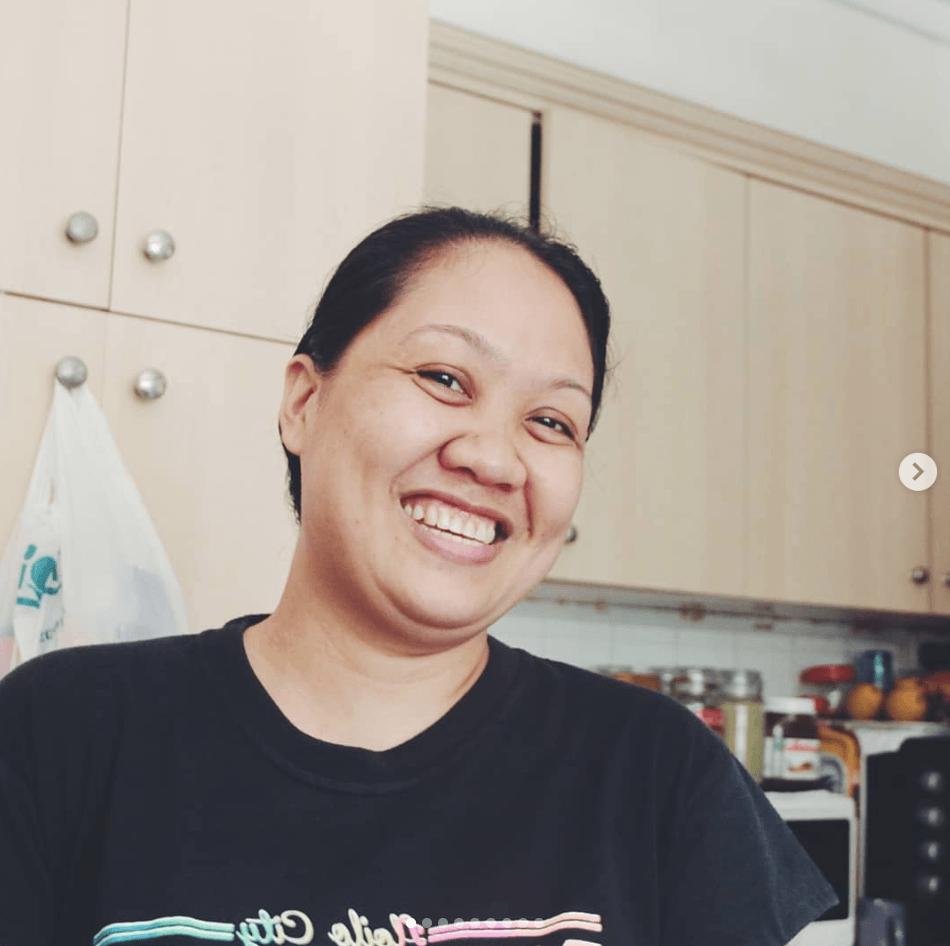
“I came to Singapore mainly for work. It took me at most 2-3 months that settle down as Singapore and Philippines are pretty similar in both weather and time zones. Also, I could understand English that there wasn’t a significant language barrier between mom and I. That being said, the difference in culture was quite jarring as Mom’s family is more conservative while Filipinos are more open and easy-going.
Singapore has become a staple rice bowl for me and my family. Having worked for 5 years, I managed to buy a house for my family to move into and have seen their standard of living improving.
I don’t really get homesick as back in Philippines, I rarely stayed at home because of work. But of course, with your family member being around you physically, it’s better than having to talking to them through the land line. Also, when I need a quick fix me up in time of homesickness, I make filipino desserts like pumpkin jam, pork sticky rice wrapped in banana leaves, adobo chicken and papaya salad. I get my ingredients from Lucky Plaza as there are a lot of Filipino dry goods store. Being in Lucky Plaza also brings me a lot of joy, because hearing all the conversations in Tagalog brings me home.\
Having stayed in Singapore for 5 years, Singapore is a place that I can find good work at and is where I can find a slice of home sometimes.
-Kristin, Domestic Helper, Toa Payoh
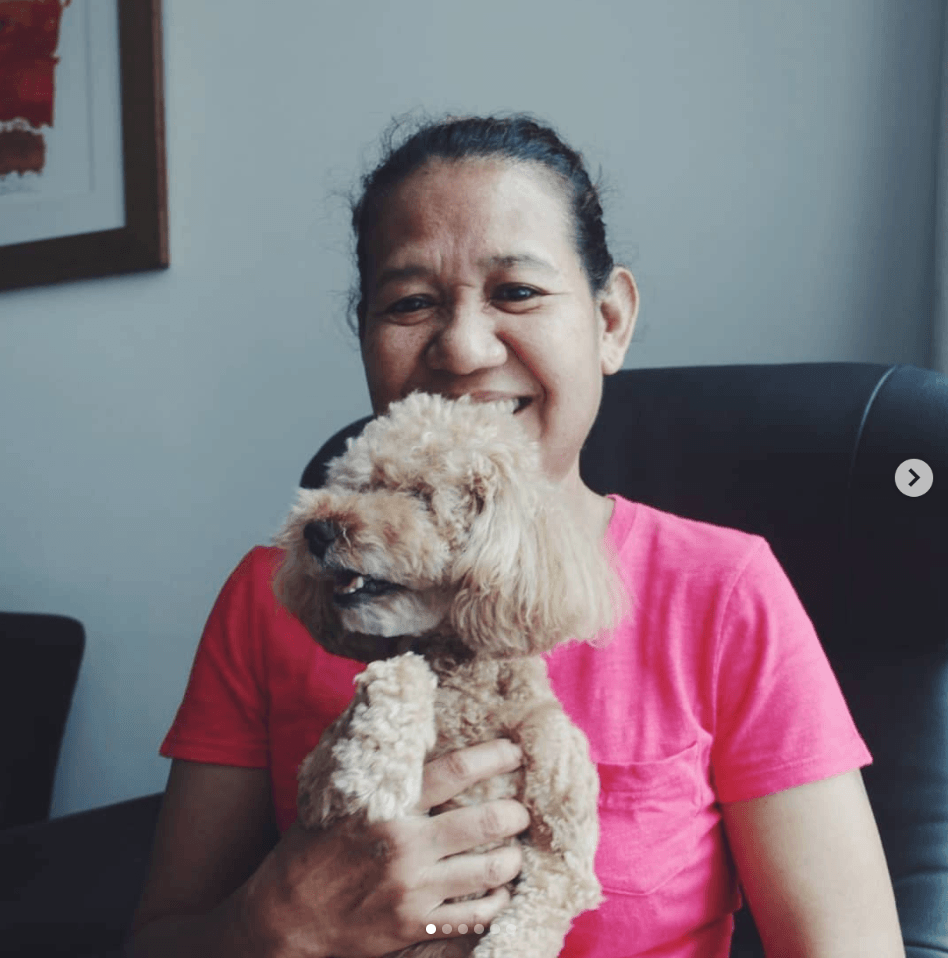
“I came to Singapore to find work. It didn’t take long for me to settle down because I could understand English and could thus, meet the expectations of my boss well.
On my days off, I would go out with my relatives, sometimes to Lucky Plaza, to shop and eat. Biting into the crispy bek bek goring and chewing on the tender and juicy ayam penyet makes me feel like I’m back at home eating my favourite dishes. Celebrating Hari Raya in Singapore is also another joyous occasion in itself. My relatives, friends and I would shop for new clothes at Lucky Plaza, prepare an Indonesian potluck feast and have lunch together at the park.
Having spent 24 years here, Singapore is like my second home now. The bosses that I’ve worked for have been good and it supported my family and I all these years. I’ve watched my Singapore “children” grow up and I treat them like my own now. Moreover, my sister and relatives are also working here so I get that slice of my Indonesian home while enjoying the financial stability and comfort that Singapore gives me.”
-Yati, Domestic Helper, Kovan
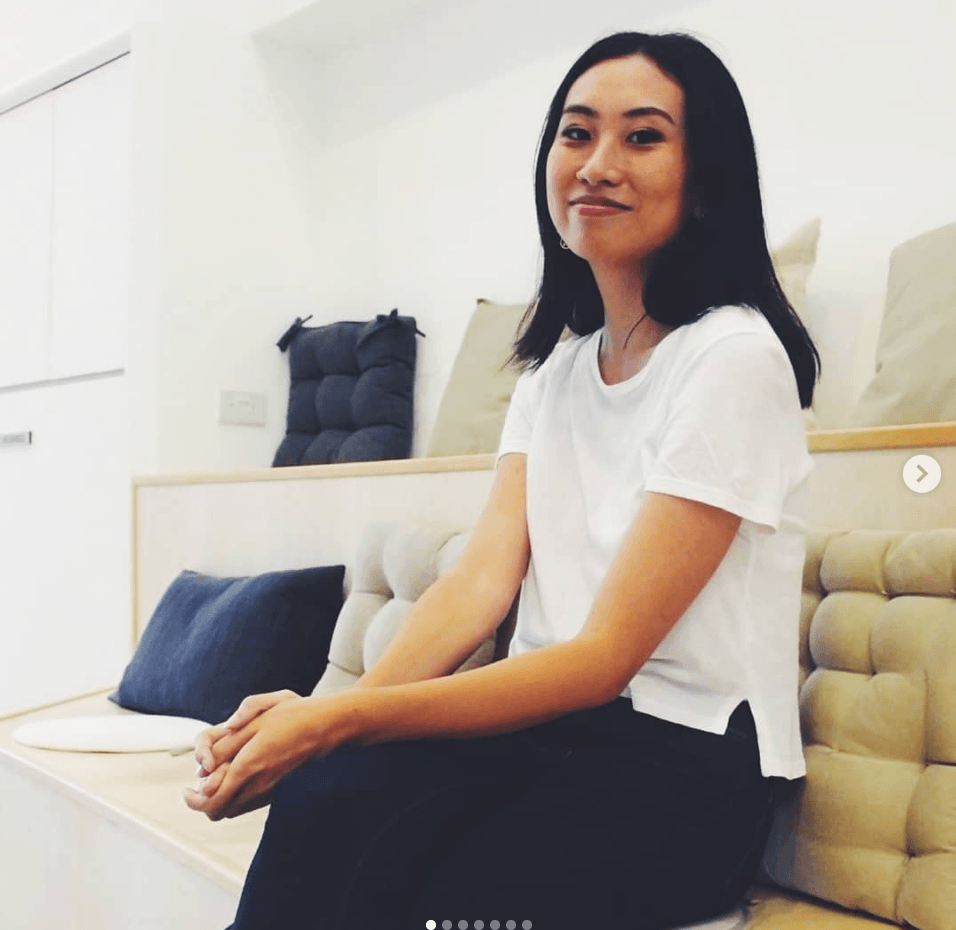
“I came to study in Lasalle to get my diploma and degree. It took me about 4 years before I felt at home here. It was also then that I got my cat and started working so having something to take care of and getting to work with the locals here, definitely bridged the gap. Initially, I hated ordering cai fan as the food laid out weren’t labelled like how they would usually be back in Japan. And even though there wasn’t really a language barrier, the uncles and aunties often spoke with thick accents that made it difficult to understand. Ordering drinks also was a feat on its own with all the “dialect names” for drinks. It took me a good couple of years before I finally got the hang of ordering food around here, thankfully.
Given that my first full-time job began here in Singapore and have been working here ever since, I do associate Singapore with the hustle and grind. Plus, Singapore is a good mix of work and play so I do intend to stay here for long. Although I don’t miss home as much now, in the first few years when I got homesick, I would call my parents or to head out to eat japanese food. My friends would also make the effort to go for japanese festivals together and that’s always nice. Being at Ippudo is always a good throwback; hearing a good mix of Japanese and English, being surrounded by manga strips that lined the walls and savouring ramen cooked just the way I’m familiar with. This hidden Izakaya spot in Cuppage also makes really good homemade Japanese food. The setting is cozy as it seats a small crowd each time and has got old aunties serving you; it’s like a little hideout for me.
Having spent 9 years in Singapore, I feel like Singapore is more home now than Japan. Because even though I was in Japan for 18 years, I’ve grown really close to my friends here and all my possessions are here, like my cat. That being said, I do feel more inspired in Japan than in Singapore, which isn’t that great given my profession but right now, comfort is a priority over my ambitions.
– Mei Kimura, Graphic Designer at Rice Communications, Dhoby Ghaut
“I came to Singapore to look for work. It didn’t take me long to get used to the lifestyle here as it was mostly work since I worked 6 days a week. However, when I miss home, I would call home to talk to my mom, especially when work gets really tiring and tough. I’ll always call home whenever something crops up, home is where the heart is.
I also met my girlfriend, now wife in Singapore. She’s also from Malaysia. Spending time with her has become a haven away from my work life as we speak with the same idiosyncrasies and share endless common topics. We would go out to look for food that is cooked to the liking of us Malaysians, salty and flavourful, for instance, the chao guo tiao store behind bugis street. Going out with my Malaysian friends and chatting idly also brings me back home for that few hours together.
Having spent close to 8 years, working in Singapore laid the foundations of my career as a chef as it gave me opportunities that would be harder to come by back in Malaysia and I would say that it definitely does open up my horizons as a chef.
-Ah Yi, Chef at Collin’s, Somerset
Here’s an Instagram page that documents their stories. It takes after “Human of New York” manner of photojournalism. (Click on image to visit page)
I wanted to use rice paper with native motifs and designs to overlay on black and white photographs of CBD areas. The reader views first the sights and sounds of St. Andrew Cathedral, Lucky Plaza and Tanjong Pagar as it is. When the reader flips the rice paper inserts over, he/she then experiences the space from the eyes of an Indonesian, Philippino and Japanese respectively. The native motifs that are characteristic of their local culture thereby painting the environment in a new light.
With black and white photographs, the motifs are also able to stand out more and would complicate the composition less.
Initially, I wanted to pick out several spots around these areas to highlight disparate activities and food that remind foreigners of home. However, after consulting Joy, we realised that the motifs applied would be too small and would complicate the composition. Hence, we decided that a full-page composition might work better. That being said, in retrospect, it might have been appropriate as it would create a host of interest points on the spread as my spread might have turned out too bare.
Rationale: Every day, Singapore welcomes another batch of foreigners who managed to clinch their citizenship. On paper, they’re often just reduced to numbers and codes but this zine documents the lives of these individuals and chronicles the struggles and aspirations that they carry.
Rationale: St Andrews is a place that Yati, the Indonesian domestic worker, frequents at with her relatives and friends in Singapore. On Hari Raya especially, they would cook a feast and organise a potluck at the park, each bringing a local delicacy. They would don on their new clothes and celebrate each other’s presence amidst the festivities.
B&W photo of St. Andrews Cathedral
Rice paper application/composition
References
Rationale: Eating Phillipino food was Kristin’s (the Philippino domestic worker) quick fix for homesickness. She would frequent Lucky Plaza to buy ingredients whenever she wants to prepare Philippino dishes. Many restaurants at Lucky Plaza also remind her of her mom’s homecooked food, thus a meal there also helps her experience a slice of home away from home. She also goes to Lucky Plaza to change currency before she returns home with her salary. Hence, the act of changing currency can be likened to her ticket back home.
Rice paper application/composition
Reference
Rationale: Whenever Mei, a Japanese graphic designer, goes out with her friends to eat Japanese food, she feels like she’s back in Japan. Everything about eating at a ramen shop or izakaya such as the sights and sounds to the taste, is reminiscent of home.
B&W photo of ramen shop at Tanjong Pagar
Rice paper application/composition

V2 – I picked these minimalist illustrations as Mei also expressed that she had an appreciation for kawaii illustrations like these. Thus, to retain the integrity of her response, I decided to go with V2 over V1.
Click on the link to access PDF file: https://drive.google.com/file/d/1S7NFGo3sbCjQKtfSMfQ57N4b9wlgA8py/view?usp=sharing
The concept of destruction in the arts is useful in raising attention to the “transience” of life and material things. It is also useful in creating “new forms” of art and commentaries through deconstruction and destruction (Eickhoff, Mueller & Baudisch, 2019). Art that plays with destruction is also able to explore the dichotomy intimacy between “destruction and creation”. Destruction in art could also be used to comment on the destruction in life. All in all, destructive processes helps to expand the artistic vocabulary. (Stiles, n.d.).
In Helena, destruction takes the form of the death of a goldfish, an organic lifeform. Obviously, the liquefied goldfish no longer lives.
Cruel or curious, the sadist who pressed the button, was able to relish or be appalled at the sight of “liquefying” the goldfish. The voyeur could have walked away from the experience feeling guilty for being passive and thus being complicit in killing the goldfish. On the other hand, the voyeur could have also walked away feeling achieved as he or she was able to take advantage of the situation and was still being able to relish in the act of liquefying a goldfish without being explicitly involved. The moralist would have walked away horrified at the knowledge that a goldfish died for unjustified reasons and in an undignified manner.
Through the death and sacrifice of the goldfish, the artist intends to highlight the nuances in morality; that fault cannot simply be attributed to a single perpetrator. In this case, given the 3 personas, the artist could be alluding to the fact that fault lies in both the bystander and perpetrator. The perpetrator (sadist) acted on his intentions, may it be cruel or curious, while the bystander (voyeur) allows it to happen, both of which contributed to the demise of the goldfish. Thus, they were both be responsible for the chaos and destruction.
The artist could be commenting on the many wars that the United States was funding and involved in in the 1990s. The silence or implicit support from the citizens proves that US citizens were very much responsible for the wars, just as the government and military are.
The artist could also be alluding to our dark penchant for destruction. That given the choice between life and death, the artist highlights that we would still choose death.
Even though destruction is useful in highlighting the negative behaviours in society, it should be applied appropriately. In the case of Helena, the message failed to justify the extent of destruction which is the unethical use of live animals. Many animal activists protested in response and the artist received a huge backlash. Hence, destruction may devalue the art more than it value-adds.
References
Eickhoff, D., Mueller, S., & Baudisch, P. (2019). Destructive Games: Creating Value by Destroying Valuable Physical Objects [Ebook]. Potsdam, Germany: Hasso Plattner Institute. Retrieved from https://oss.adm.ntu.edu.sg/18s2-dn1010-tut-g01/wp-content/uploads/sites/3038/2019/03/Destructive_Games.pdf
Stiles, K. The Story of the Destruction in Art Symposium and the “DIAS affect” [Ebook] (pp. 41-65). Sabina Breitwieser, ed., Gustav Metzger. Geschichte Geschichte (Vienna & Ostfildern-Ruit: Generali Foundation and Hatje Cantz Verlag, 2005). Retrieved from https://web.duke.edu/art/stiles/KristineStilesDIAS_Affect-2.pdf
Interactive experiences/installations can be used as platforms to comment and reflect on social behaviours in a less assertive and direct manner. This is useful in spurring conversations and is crucial in changing social behaviours.
Therefore, we felt that we could use this opportunity to comment on how consent in sex has been overlooked. We’ve heard many stories from friends around us, of how an innocent girls’ night out turned into a bad experience. Instances of being intoxicated and “daobao-ed” to a stranger’s home or hanging out and drinking with friends.
Moreover, the whole notion of consent also alludes to the lack of one in the proliferation of personal sensitive materials. This brings up the recent case of Bellywelly’s leaked sex tapes, revenge porn, the proliferating use of hidden cameras in South Korea.
Initially, we wanted a set up of a book as opening a book is similar to the act of separating a pair of legs. However, we felt that this set up would be far too simplistic and lacking thus we decided to use a dining setting.
The dining setting alludes to the first dates through which many of these instances began with. Also, a dining setting alludes to the predatory behaviour of preying on an individual.
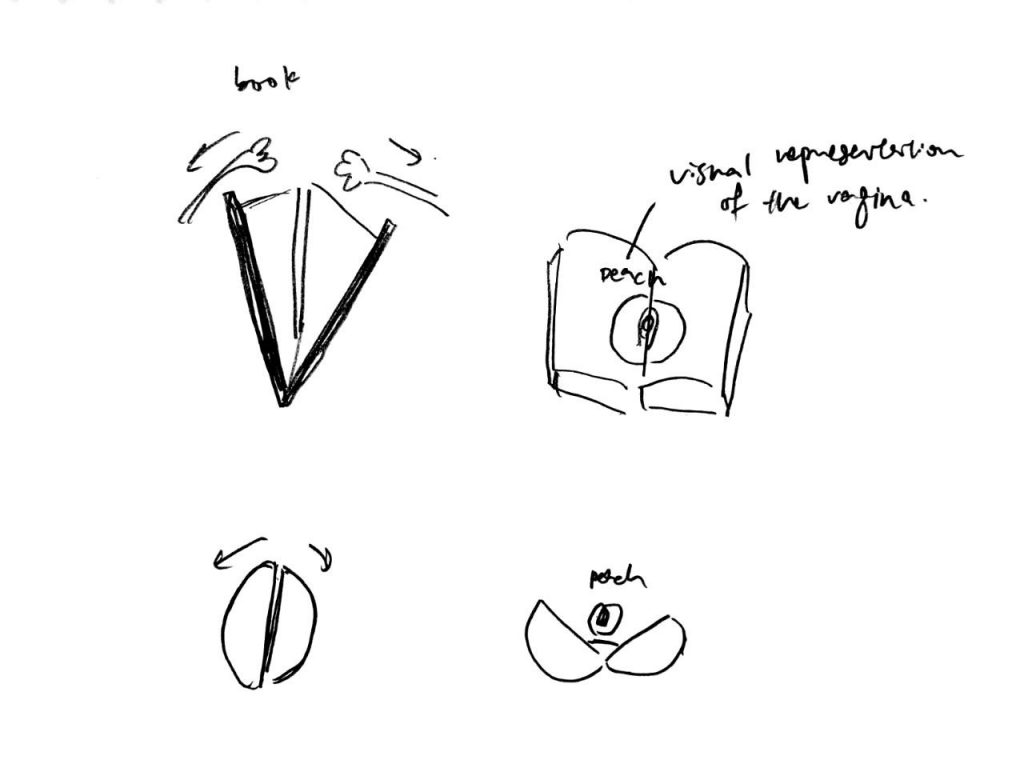
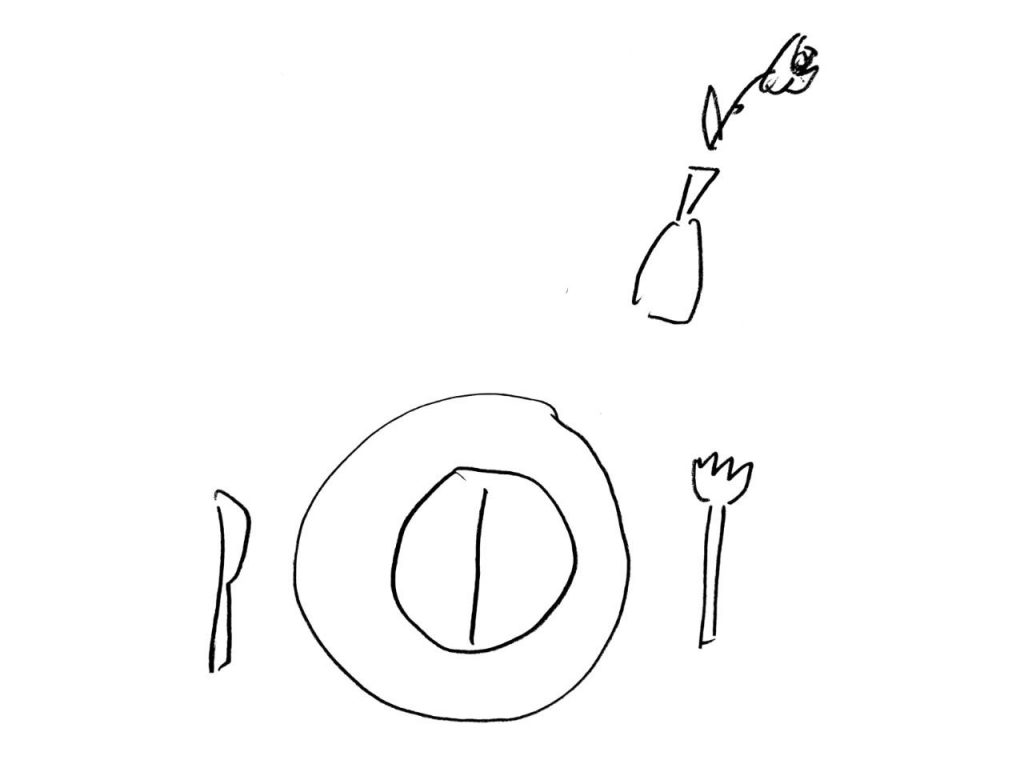
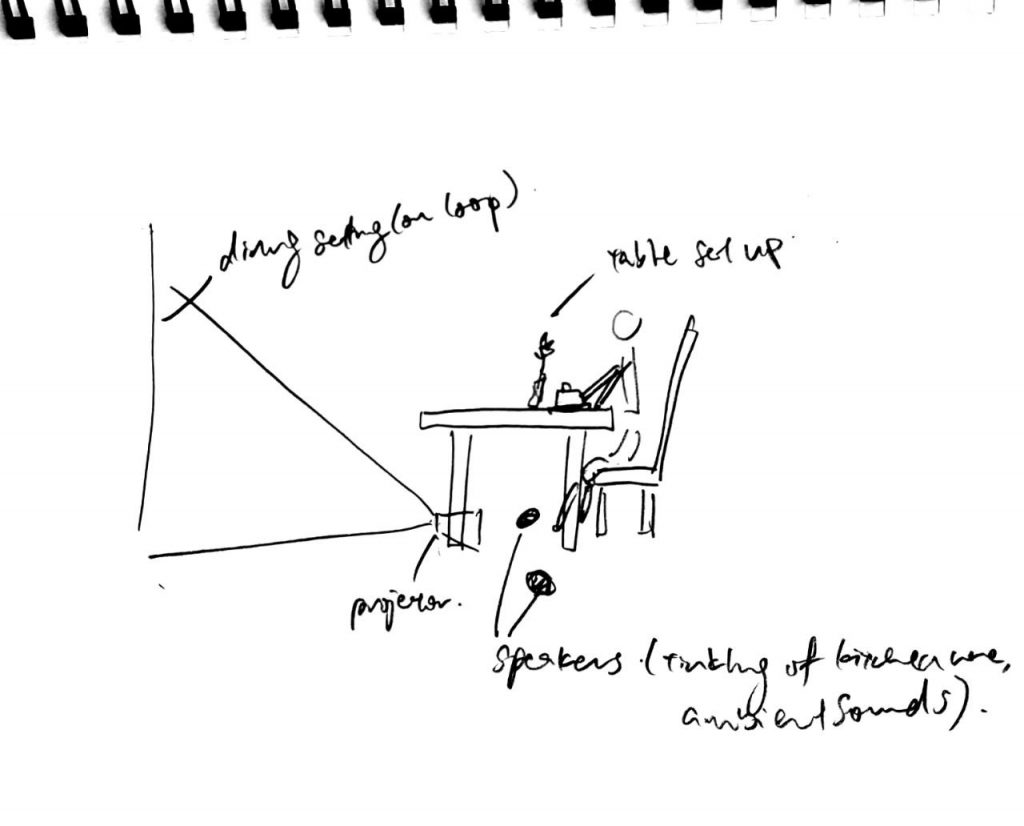

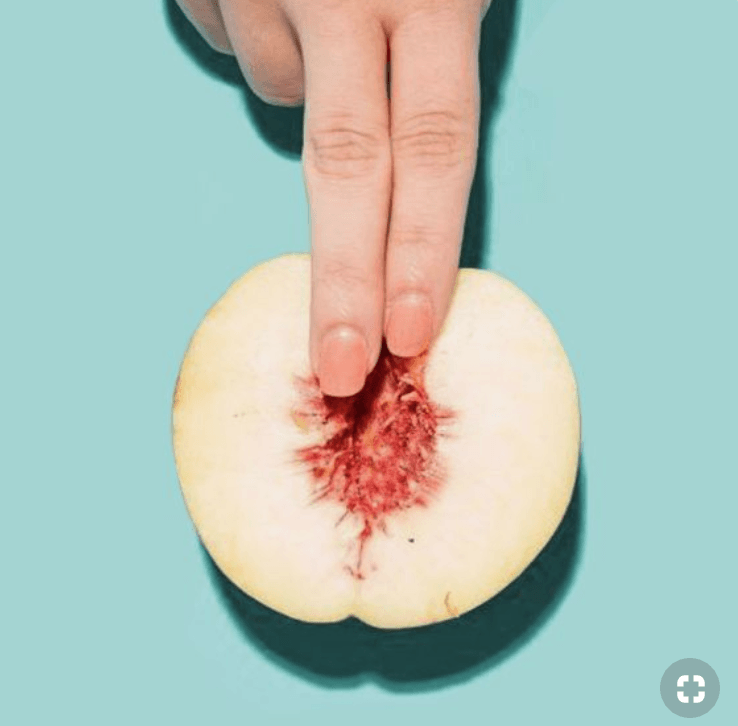
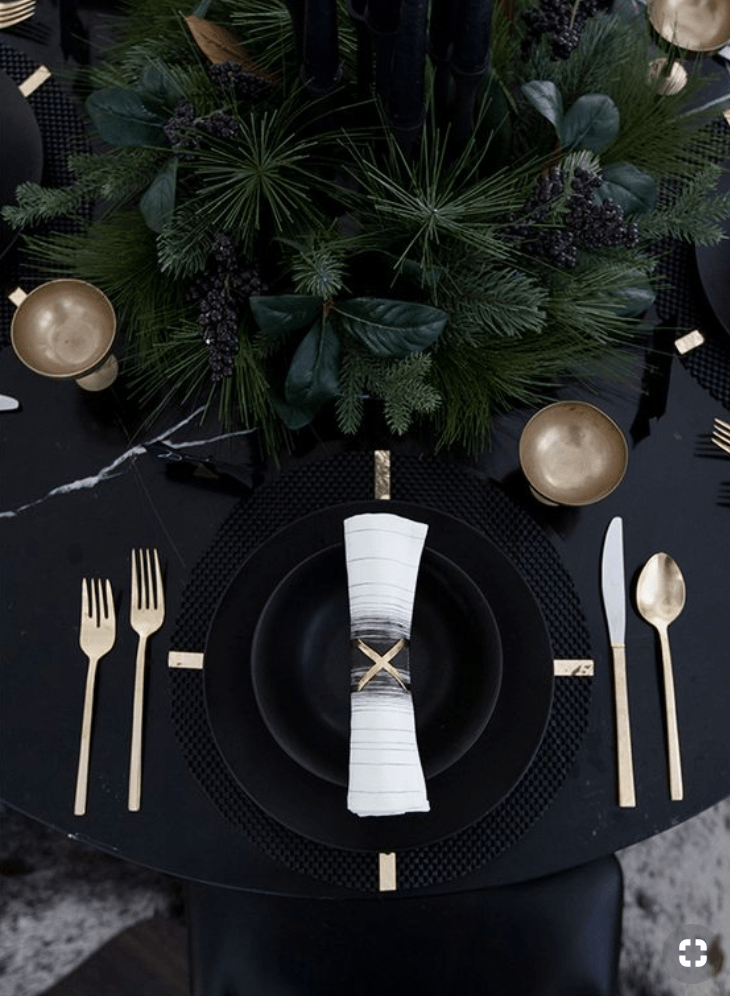
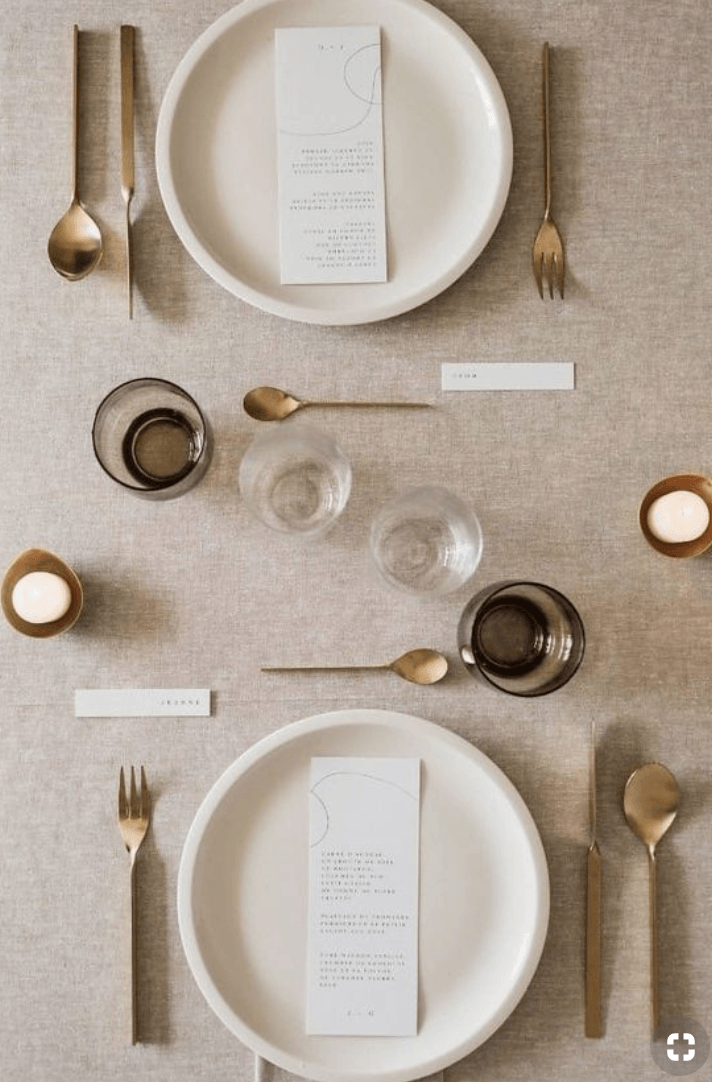
1. How does your audience experience your project?
JE: My participant will enter an immersive installation that emulates a restaurant. He/she will approach and sit at the table. A visual scene at a restaurant will be projected while the ambient sounds of a restaurant will be played. The participant will have nothing else to do but to lift the cover off the plate. It will be a struggle as it is held down by magnets but when the participant is finally able to lift up the cover, he/she will see a cross-section of a real peach/pomegranate. Peaches and pomegranates are strong visual representations of the vagina. At this point, the video and sounds will stop abruptly and the screen will show this phrase, “silence is not consent” before fading out to a black screen
YL: The audience would walk up to the installation to appreciate the set up. The audience would interact with the object by lifting the cover, hence triggering our output which is the change in the projection of the environment (and changing the atmosphere of our installation).
2. Is it for a single person to engage with your project or for multiple participants concurrently?
JE: The installation can only accommodate one person at a time.
YL: It is designed for single person at the moment in order to amplify the sense of guilt/disturbance the participant may experience as well as allowing them to think and ponder over their experience without exterior distractions.
3. What is the interaction or situation you are creating for your audience?
JE: I’m placing the participant in the shoes of the protagonist in which they have to act their deliberate intent to access the food. This gives the participant a visceral point of view of someone with predatory intent. Through the experiment, the participant will understand that without their deliberate actions, the peach would remain concealed. This comments on the confusion behind consent before sex. Consent is assertive and clear hence anything outside of these parameters would then fall outside of content.
YL: It is to create a symbolic situation in accordance to our chosen topic. The interaction is the act of removing the object’s cover, while the situation is the sudden change of scene in the projected restaurant.
Body Storming Notes
Muncheng:
Approach the table,
Then I will take a seat
This is the menu
Supposed to observe setting
Menu beside Mat
Knife, fork
Plate and theres a container
Supposed to open this, it’s a mould
Tearing it, idk what’s inside, a bit confused and scared
“Silence is not consent”
I’m opening it
Not sure how it relates to “silence is consent”
Abit confusing
Don’t understand why there’s a mould or what’s inside
Maybe just cos there’s no sound, can’t just take it and pry it cos nobody tells me not to
What she’s supposed to do is clear but intention of gesture not clear
Jiaeenn:
Commentary on #metoo and consent
Consent being grey
Ball inside supposed to represent a peach
Setup relies on physical things
Peach will be clearer
Ties symbolically to how first dates are where women and predators meet
Act of opening it shows the intent
Refining:
instead of container: can be fine dining cover
Make it harder to lift up, more forceful/magnetic
Comments on the voice feedback:
A little bit on the nose
A repeated phrase like alarm for emphasis, something that’s being triggered
Currently it’s like a throwaway line
Atmosphere environmental sound effects of fine dining
Introduce context (maybe add guy’s voice talking to participant)
If there were a screen of a guy to converse with – abit awkward and participant is meant to be the perpetrator
Maybe add mannequin, no interaction but there’s context
Who is the participant? Victim or perpetrator? Perpetrator
Instead of having container there, can have it served to participant?
1. What did you learn from the process?
JE: Given that our installation circulated around a straightforward and simple gesture, our set up has to rely heavily on physical and visual cues to set the context. Giving more thought to the narrative of the space, such as the visuals, sounds and even smells should be considered so that the setting and premise is clearer to the participant.
YL: I’ve learnt of the importance of contextualization and atmosphere. As a rough sketch, the feel and environment is lacking. This is made clear when participant tested it out and there was a slight sense of awkwardness in the process which is also partly contributed by the confusion of the participant.
2. What surprised you while going through the process?
JE: I placed a small double sided tape at the opening of the circular mould, and used tape to hold the mould together at the bottom. I expected the participant to merely pry the circular mould open like how one would with a durian. However, she tore open the tape (from the bottom) that was meant to act as a hinge for the circular mould. This reminds me that hidden elements will remain ignored while what can be seen acts as visual cues whether intended or not.
Also, the exercise went on longer than we expected as we expected the participant to stop after the auditory cue, “silence is not consent”. However, the participant continued picking at the set up which tells me that I have to think of a more intuitive closure to cue the end of the experience.
YL: The instructions interpreted wrongly by the participant. The object was meant to be pried open, but the participant removed the tapes that serves as hinges to open it instead. I think this brings out the issue of designing the object to be understandable and clear, as well as the need to test it on others as what they interpret may be widely different from our intention.
3. How can you apply what you have discovered to the designing of your installation?
JE:

The rationale behind the circular mould is that the act of splitting the mould is similar to the act of separating a pair of legs, with the intent to access the private area. However, the symbolism behind struggling to open the mould stays the same as struggling to lift up the cover from the plate; they both underline the perpetrator’s intent and initiative.
YL: The way we present our object in its environment is as important as the object itself. Our installation relies more on visual elements and context to bring out the appropriate emotion we want our participants to go through. As such, we may include elements of unsettledness for the participants such as a change in atmosphere, example from lively restaurant to a silent one with the use of background sound.